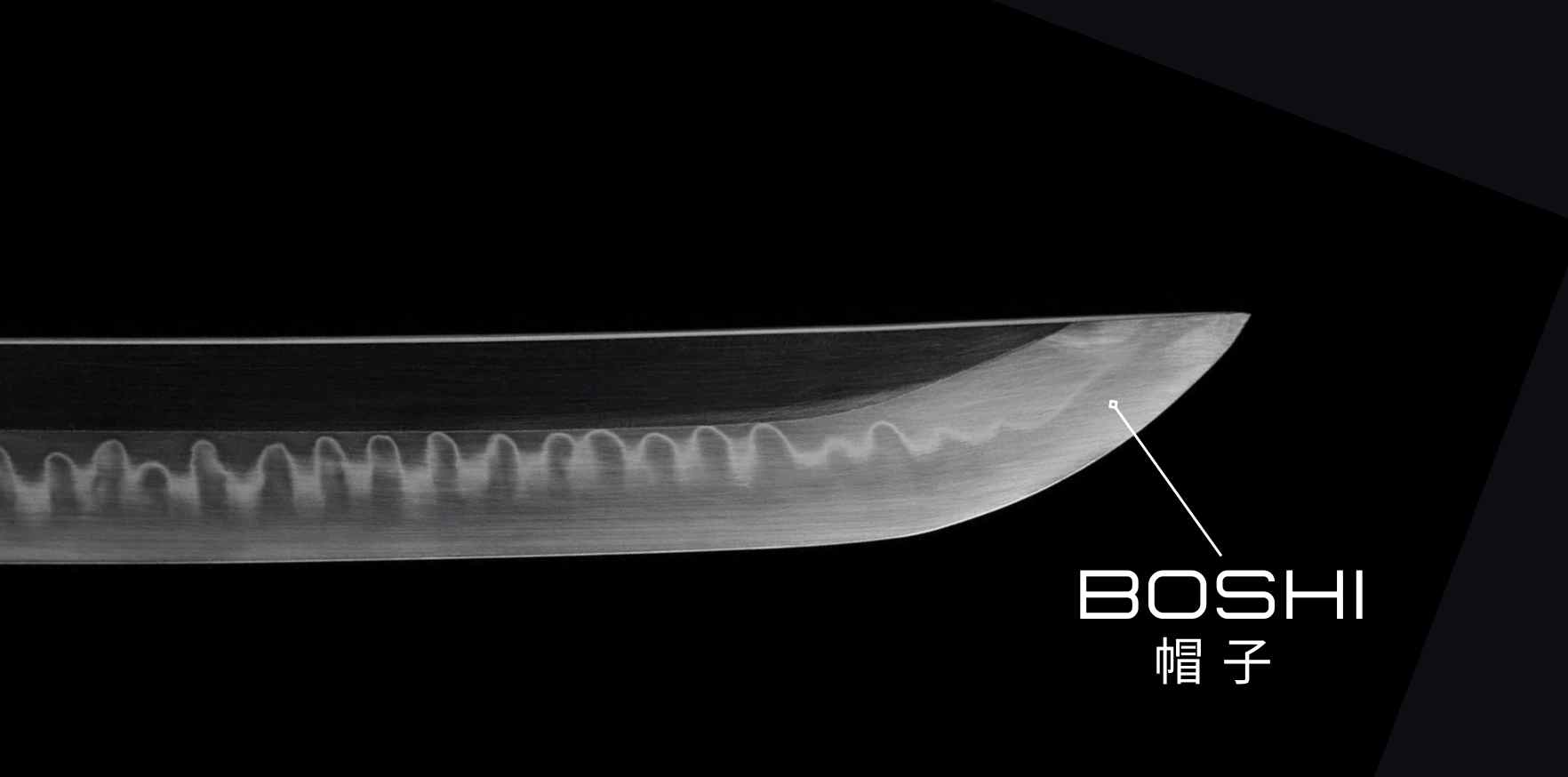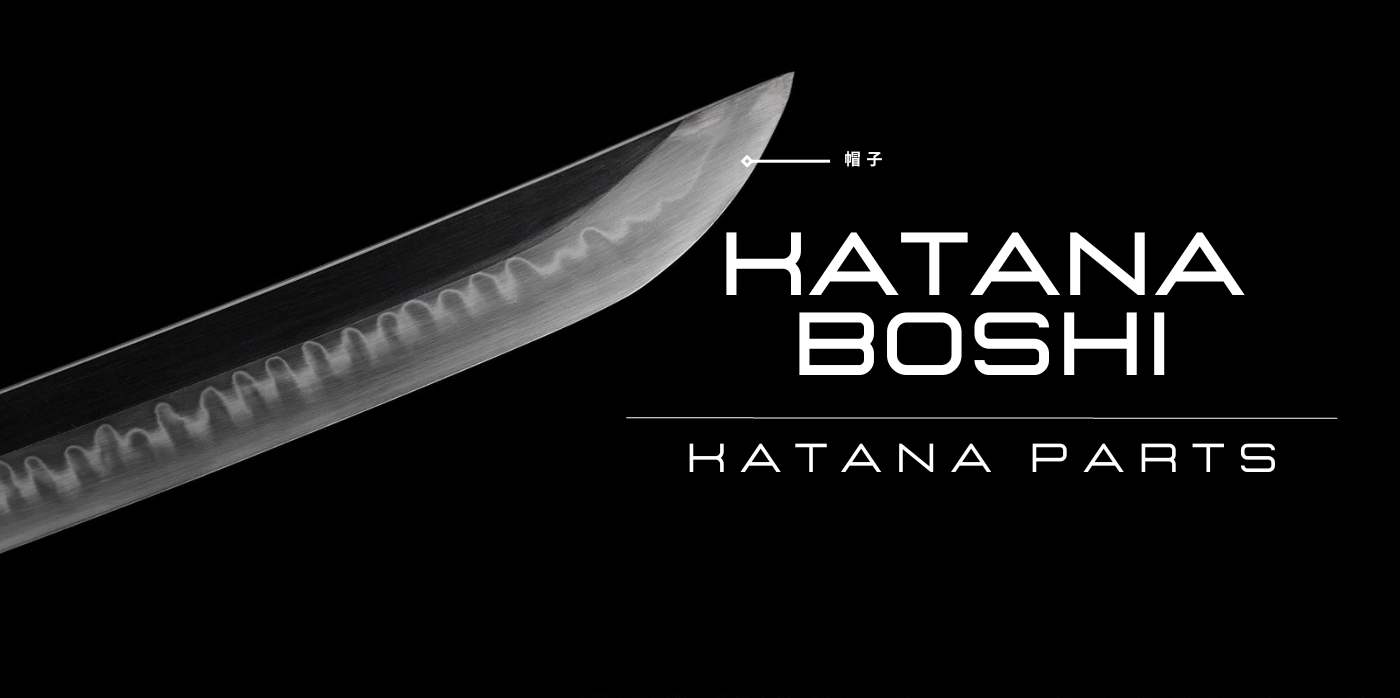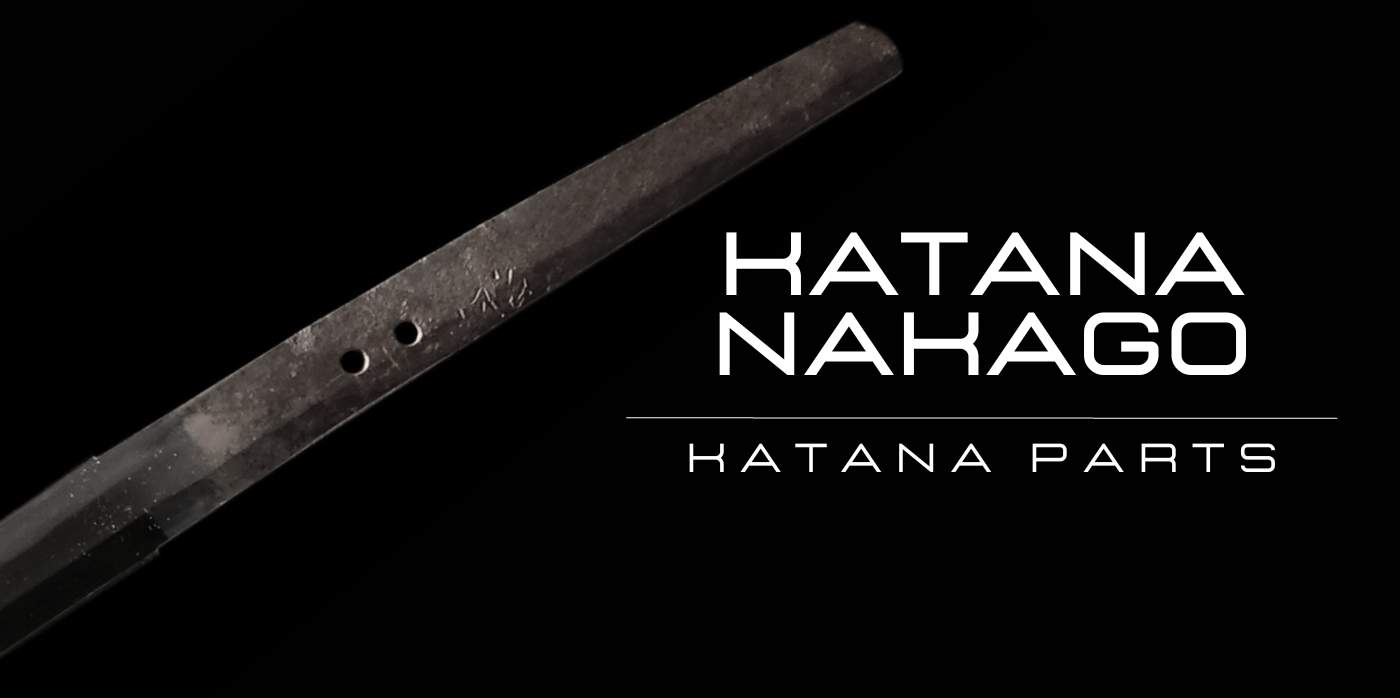The blade is the heart of the katana, displaying the craft of the swordsmith. Here, elements like the hamon (temper line), shinogi (ridge line), and boshi (temper pattern on the tip) come together, marrying form and function seamlessly.

1. Defining the Boshi
The bōshi (帽子) refers to the hardened area at the tip of the katana, extending down from the point to where the blade begins to curve back. The boshi is essentially the continuation of the hamon into the tip of the blade, and its pattern can vary widely among different katanas.
The boshi, with its hardened edge, enhances the cutting power of the katana's tip while adding an aesthetic element to the blade. Additionally, a well-defined boshi is a testament to the skill of the swordsmith and can contribute to the katana's value and authenticity.
2. Variations in Boshi
2.1 Types of Boshi
There are several types of boshi patterns, each with its own unique visual appeal. Some common ones include the midare-komi (irregular), jizo (named after the Buddhist deity), and kaen (flame-shaped). The choice of boshi can significantly influence the sword's overall look and feel.

2.2 Crafting the Boshi
Crafting the boshi requires immense skill and precision, as it involves controlling the hardening process at the blade's tip. The swordsmith applies clay to the blade in a specific pattern before heating and quenching the sword, creating the desired boshi design.
3. Boshi in Sword Appreciation
3.1 Evaluating the Boshi
In the world of sword collecting, the boshi is a significant factor in evaluating a katana. Such as the yokote, it is a reflection of the swordsmith's skill and artistic flair, and a well-crafted boshi can greatly increase a sword's value.
3.2 Preserving the Boshi
Over time, the boshi can be worn away or damaged, especially if the sword is used or polished incorrectly. Proper maintenance and care are crucial to preserving the boshi and maintaining the sword's overall integrity.
Summary:
- The boshi is the hardened area at the tip of the katana, which enhances the cutting power and adds to the aesthetic appeal.
- There are different types of boshi patterns, such as midare-komi, jizo, and kaen.
- Crafting the boshi requires immense skill and precision, reflecting the swordsmith's expertise.
- The boshi is a significant factor in evaluating a katana, and a well-crafted boshi can increase the sword's value.
- Proper maintenance and care are essential for preserving the boshi and maintaining the sword's overall integrity.





